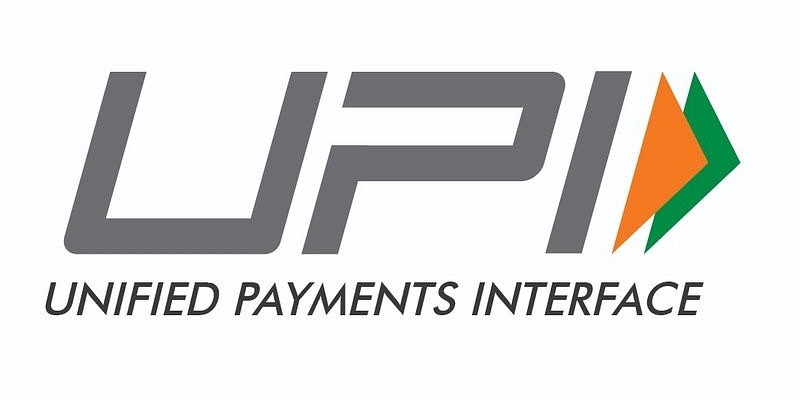Ideas
NPCI: The Little Known ‘Start-Up’ Behind India’s Cashless Revolution
- How NPCI is driving India’s shift to cashless operations

UPI
Due to the ongoing demonetisation exercise, cashless payments and financial technology has come to the fore. Everyone is talking about cashless transfers and payments. However, much before the demonetisation drive, successful transaction systems such as the Unified Payments Interface (UPI), the Immediate Payment System (IMPS) had made their mark.
But who is behind all this?
Answer-a little known startup based out of Mumbai.
The National Payments Corporation of India (NPCI), formed in 2008, is a not-for-profit company registered under Section 25 of the Companies Act. The company has been mentored and promoted by the Reserve Bank of India (RBI) and the Indian Banks’ Association (IBA) as an umbrella organisation for all retail payments across the country. The NPCI today handles 20 million transactions a day, as compared to 2 million transactions a day five years ago.
As of November 2016, the NPCI shareholders consist of 56 banks, which includes public sector banks, private sector banks, multi-state cooperative banks, rural banks and even foreign banks. The original ten banks that promoted the company included a mix of public sector banks, private sector banks (ICICI Bank and HDFC Bank) and foreign banks (HSBC and Citibank).
The company aims to create the infrastructure for high-volume transactions which will reduce transaction costs to a mere fraction of what they are now. Here are a few of the NPCI’s innovations over the past few years.
National Financial Switch
The National Financial Switch (NFS) was set up by the Reserve Bank of India to set up a common banking and retail payment system in the country. Under the NFS, all ATMs across the country were linked into a common network and any cardholder was able to withdraw cash from any ATM. The NFS was preceded earlier by Swadhan, a shared ATM network that was operational from 1997 to 2003. NFS enables any bank to join the network and enable both financial and non-financial transactions such as balance enquiry and mini-statements from any ATM. As of 2016, there are over 2.3 lakh ATMs connected through the NFS including 14000 White Label ATMs not connected to any bank.
Cheque Truncation System
The Cheque Truncation System (CTS), also known as the Image-based Clearance System, was implemented in 2010 to enable faster processing of cheques in India. Under the CTS, all existing cheques were replaced with standardised cheques where the cheque data would be captured at the collecting bank and an image of the cheque is then forwarded to the drawee bank. This speeds up the process of clearing payments, since electronic data transfer is faster than physical transfer. The Image clearance is done using a secure network operated by the RBI. It also offers greater security with a Centralised Image Archival System that is used for Protection against Cheque Fraud.
RuPay
Launched by the NPCI in 2012, the RuPay is India’s domestic card scheme that competes with global schemes such as Visa and MasterCard. It was created in order to set up a domestic open-loop payment system in India. RuPay transactions are processed domestically, and hence they are cheaper, making it a preferable alternative to global ones. All RuPay cards function across the NFS, along with a few global systems due to a tie-up with Discover Financial Services.
Immediate Payments System
The Immediate Payments System (IMPS) allows money to be sent immediately, and in real-time, thus enabling instant payments at any point in time. Unlike NEFT, where the transfers are executed in batches every hour, resulting in a lag, IMPS transfers are instantaneous and is available at all times, throughout the year. It was launched in 2010 with a few member banks before getting a nationwide rollout later on in the year.
Unified Payment Interface (UPI)
Arguably the NPCI’s most famous product till date, the UPI is built atop the IMPS platform. It eliminates the need for a person to have to enter the IFSC code of the recipient and add them to a list and then send the money. It allows users to enter a Virtual Payment Address (VPA) that is directly linked to the beneficiary bank account, sending the money instantly, that too with a Mobile Phone. We had, in an earlier article spoken about how UPI will change the face of Indian banking through digital disruption. UPI is slowly climbing up the ladder.
National Unified USSD Platform (NUUP)
The NUUP makes use of USSD channels on GSM phones to enable those with the most basic phones to access their bank accounts and make transactions. We had earlier written about this little known banking system that had the potential to change the future of Indian banking for the rural masses.
Support Swarajya's 50 Ground Reports Project & Sponsor A Story
Every general election Swarajya does a 50 ground reports project.
Aimed only at serious readers and those who appreciate the nuances of political undercurrents, the project provides a sense of India's electoral landscape. As you know, these reports are produced after considerable investment of travel, time and effort on the ground.
This time too we've kicked off the project in style and have covered over 30 constituencies already. If you're someone who appreciates such work and have enjoyed our coverage please consider sponsoring a ground report for just Rs 2999 to Rs 19,999 - it goes a long way in helping us produce more quality reportage.
You can also back this project by becoming a subscriber for as little as Rs 999 - so do click on this links and choose a plan that suits you and back us.
Click below to contribute.
Latest